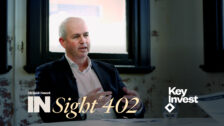Vaccines to the rescue, says Atchison, but how much optimism is baked-In?
Asset consultancy Atchison Consultants expects 2021 to be a “recovery year” on global markets, based on the prospects for the COVID-19 vaccines that are being rolled-out, but says these prospects are themselves the major risk, given the amount of investor optimism that has been baked-into valuations on the back of the vaccine announcements.
While the vaccine announcements and the passing of uncertainty around the US election and Brexit have removed three of the near-term worry points about the macro outlook, Atchison says, the outlook for 2021 is one of “uneven” global economic growth.
“The US should emerge with stronger-than-trend growth, but Europe may struggle with challenging demographic trends, political disunity and weaker than required fiscal policy,” writes the firm. “The Asian region suffered less during the pandemic and is further along the path to recovery. It is likely that there will be a continuing shift in performance away from investments that benefitted from the pandemic and lockdowns – like US shares, technology and health care stocks and bonds – to investments that benefit from recovery, such as resources, industrials, tourism stocks and financials.”
On this view, equities “remain relatively attractive” as we enter 2021, despite pockets of elevated valuations, Atchison says. “The broad political support for pro-growth policies, rather than the austerity attempted in the aftermath of the GFC, should prevent a double-dip. Global shares are expected to return around 8% but (investors should) expect a rotation away from tech-heavy US shares to more cyclical markets in Europe, Japan and emerging countries.”
Atchison sees low inflation pressure in most countries and dovish central banks continuing to limit the rise in bond yields. “Major central banks have made it clear that they will wait until after inflation rises before raising rates. This was highlighted by the recent move by the US Federal Reserve to target average inflation and allow an overshoot of its 2% target.
“A slow-to-react Fed should limit the rise in the 10-year Treasury yield to between 1.1 to 1.4% from the current 0.85%. It is reasonable to expect similar increases of between 25 to 50 basis points in German bund and British gilt yields. Japanese government bond yields, though, are likely to remain close to zero with the Bank of Japan continuing with yield curve control,” says Atchison.
Investors should expect short term yields to remain anchored at all-time lows, but the long end of the curve “may rise moderately as stimulus lifts inflation expectations from very-low levels,” the firm says. “Without the tailwinds of failing rates, and with the prospect of a steepening curve, the returns on government bonds promise to be meagre or negative.
“Cash and bank deposits are likely to provide very-poor returns, given the ultra-low cash rate of just 0.1%. Low-duration, floating-rate securities and investment-grade credit offer the best risk reward profile.
“As a result, there is a relatively positive view on cyclical sectors (industrials, basic commodities, financials), which will benefit from either a return to trend growth and/or a rotation away for secular growth companies,” Atchison contends.
The firm is positive on commodities in the short term, but advises caution through 2022 and beyond, based on a potentially weakening Chinese economic growth outlook. It says “further short-term appreciation in the Australian dollar is possible, and may holdout further should US corporate earnings weaken and commodity prices fall.”
Atchison feels the low interest-rate environment should support commercial property, which is offering historically high yields relative to bonds and equities. On this basis, it believes industrial, logistics, and modest non-CBD office properties on a relative basis look the most attractive.
In the residential sector, Atchison expects Australian home prices to rise by about 5% this year, being boosted by record-low mortgage rates, government home-buyer incentives, income support measures and bank payment holidays – with the caveat that but the stop to immigration and weak rental markets will likely weigh on inner city areas and units in Melbourne and Sydney. However, the firm expects outer suburbs, houses, smaller cities and regional areas to see stronger gains in 2021.
This improved outlook for domestic housing construction, and supportive lending condition will help to counteract the loss of population-driven growth, thus reducing downside risk to Australian GDP figures.
A wildcard in the domestic economic outlook is the massive amount of pent-up cash: Atchison says that as a result of COVID-19, while Australians saved more than at any time in history, cut billions of their credit card debts and switched to debt cards and buy now pay later plans, Australians also hoarded cash, a record $14.5 billion over the course of 2020.
Overall, Atchison Consultants expects to see the following asset class implications for 2021:
- Equities should outperform bonds
- Long-term bond yields should rise, though with steeper yield curves likely limited by continued low inflation and central banks remaining on hold
- The US dollar may weaken given its countercyclical nature
- Non-US equities should outperform given their more cyclical nature and relative valuation advantage over US stocks
- The value equity factor should outperform the growth factor. A “return to normal” by the second half of the year should help extend the rotation that began in early November away from technology/growth leadership toward cyclical/value stocks.











